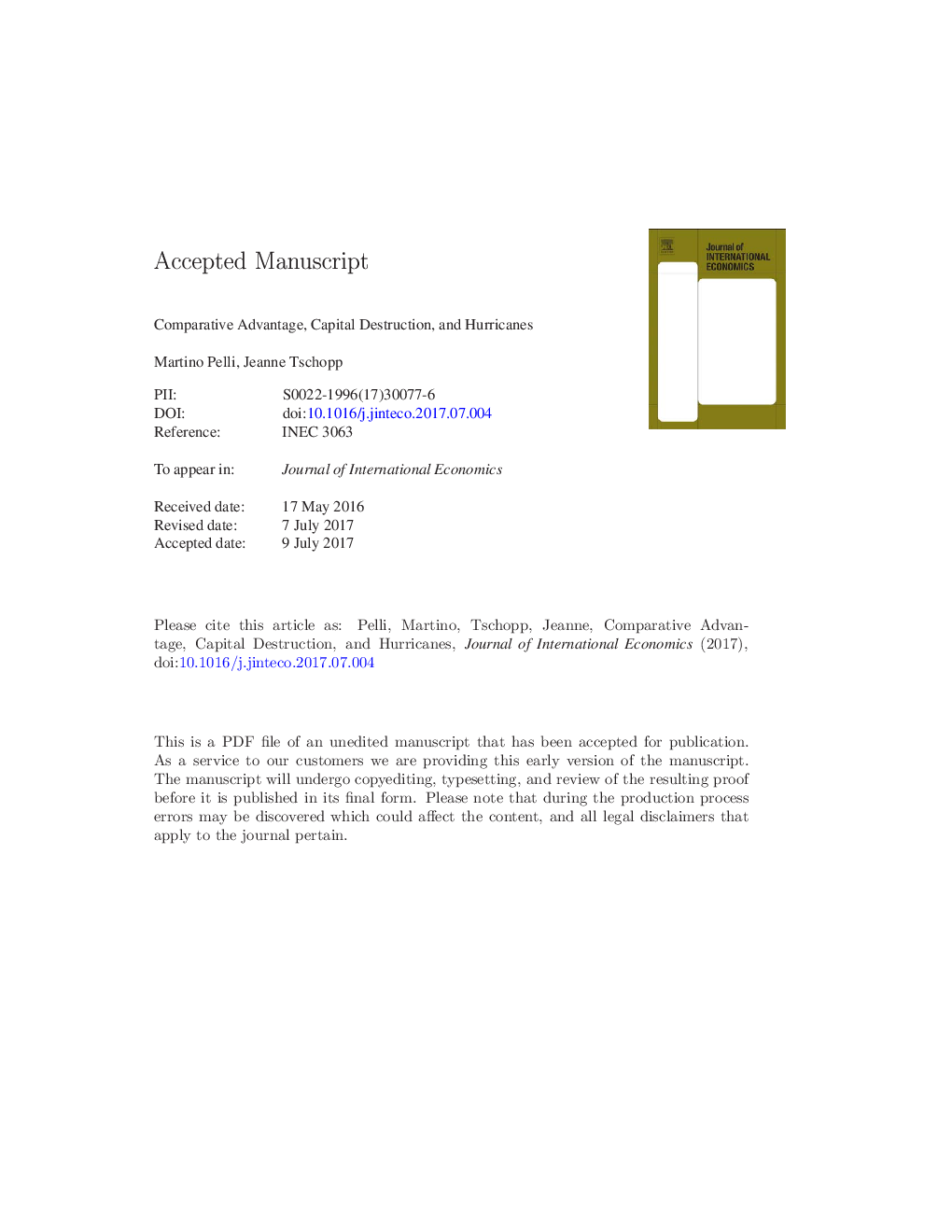| Article ID | Journal | Published Year | Pages | File Type |
|---|---|---|---|---|
| 5100909 | Journal of International Economics | 2017 | 72 Pages |
Abstract
The comparative advantage of countries evolves over time, yet firms do not continuously adapt their production structure to this evolution. This slow adaptation may be due to high adjustment costs, such as those associated with the disposal of existing physical capital. In practice, these costs may explain why we observe that countries export goods at both ends of the comparative advantage spectrum. This article investigates what happens if the cost of adjusting to the dynamics of comparative advantage is unexpectedly reduced. We use hurricanes to evaluate whether a negative exogenous shock to firms' physical capital leads to a reorganization of exports towards comparative advantage industries. Using a panel of 46 countries and 4-digit industries over the period 1980-2000, we show that the effect of hurricanes on exports is monotonically increasing in comparative advantage. Specifically, export levels drop for industries with a low comparative advantage and grow for industries with a high comparative advantage. Our results also indicate that the process of shifting resources towards higher comparative advantage industries intensifies within the three years following the shock. These findings suggest that if the opportunity cost of adjustment decreases, firms tend to build back better and move up the spectrum of comparative advantage.
Related Topics
Social Sciences and Humanities
Economics, Econometrics and Finance
Economics and Econometrics
Authors
Martino Pelli, Jeanne Tschopp,
